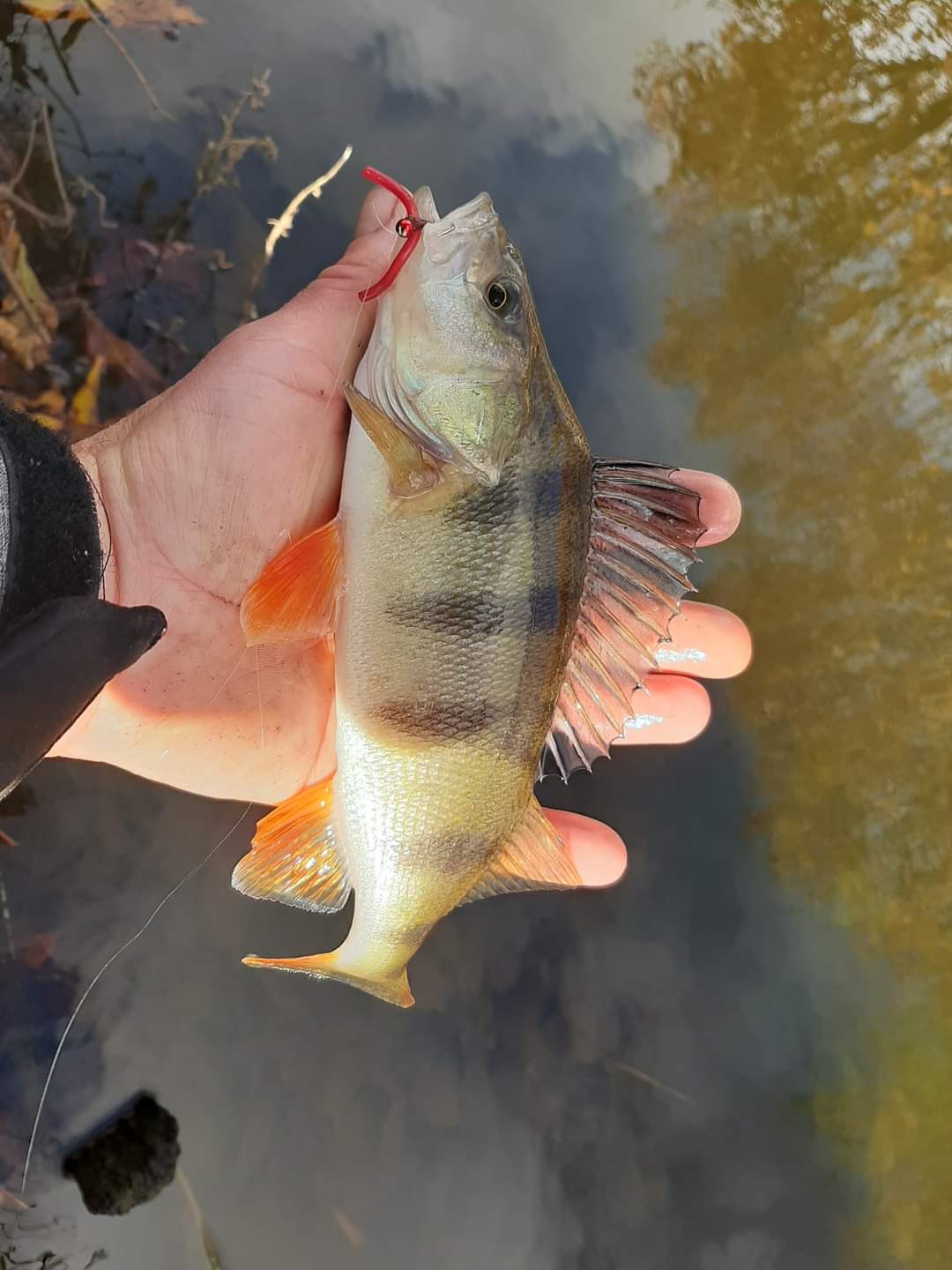By Geoff Hadley
Standing out against the reflection of the council offices on the opposite bank, my pink and yellow indicator tippet travels towards me downstream, tracking the two small weighted nymphs below. Without warning the indicator stops and a smart strike puts a healthy bend in my #4wt Drift XL; there is a substantial silver flash some 4 feet below the surface and dogged resistance as the fish tries to run upstream.
I turn the fish and it kicks and pulls back against my steady pressure, then changes tack and darts downstream, making for the snags below. I change the rod’s angle, hold hard and force the fish up to the surface. It kicks again and dives towards the undergrowth beneath my feet, but I’m ready for this trick and, with a swift dip of my Rover net, I have my prize. Silver scales, red fins, it weighs a good pound and a half. A truly spectacular… roach!
What? You were expecting a grayling? A trout? You’d be very lucky indeed to find either of those in my local rivers…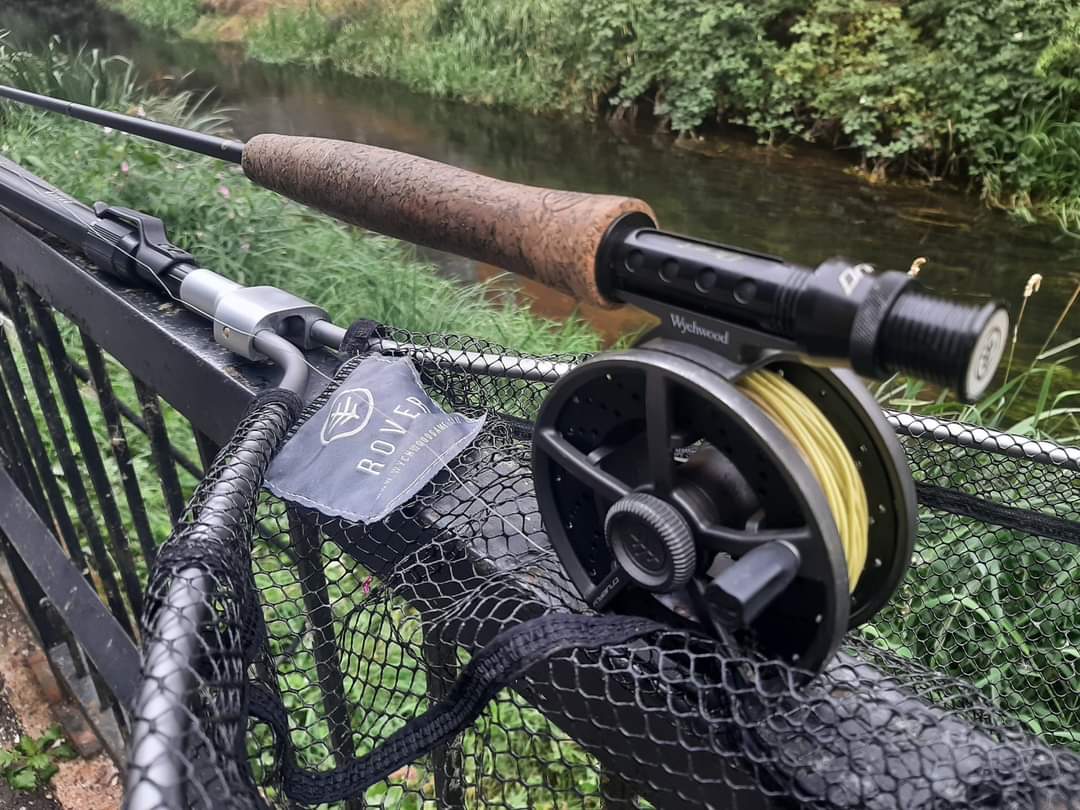
The last several years have seen a dramatic upsurge in fly anglers turning to coarse species to get their fly fishing fix. The growing movement of “Fly For Coarse” sets itself firmly against fly fishing’s inherent snobbery against coarse fish and opens up a whole new set of avenues and species for the open minded fly angler to set themselves against.
Each species of coarse fish offers itself as a viable challenge (all freshwater fish depend on pretty much the same organisms for their food) though each requires a little thought and a tweak to your technique to target them successfully.
I was a coarse angler long before I came to fly fishing so, when I did pick up a fly rod, I could see the potential immediately. Now, I’m fortunate enough to have two really lovely little rivers right on my doorstep so I set about targeting their coarse inhabitants with a will.
Back then it felt very much as if I was the only one doing it, certainly I very rarely saw anyone else wielding a fly rod on my local rivers (in fact it’s not much different now!) but I stumbled upon Dominic Garnett’s excellent book Fly Fishing For Coarse Fish in Waterstones one rainy Saturday afternoon and, suddenly, not only was I no longer alone, but I also had a foundation on which to base my fishing, particularly in terms of fly selection. I was off and running!
I even managed to win the inaugural Fly Fishing For Coarse Fish Competition back in 2013, with a 4.5lb bream I stalked from my local river on a black gold-head nymph called an “Evil Weevil!”
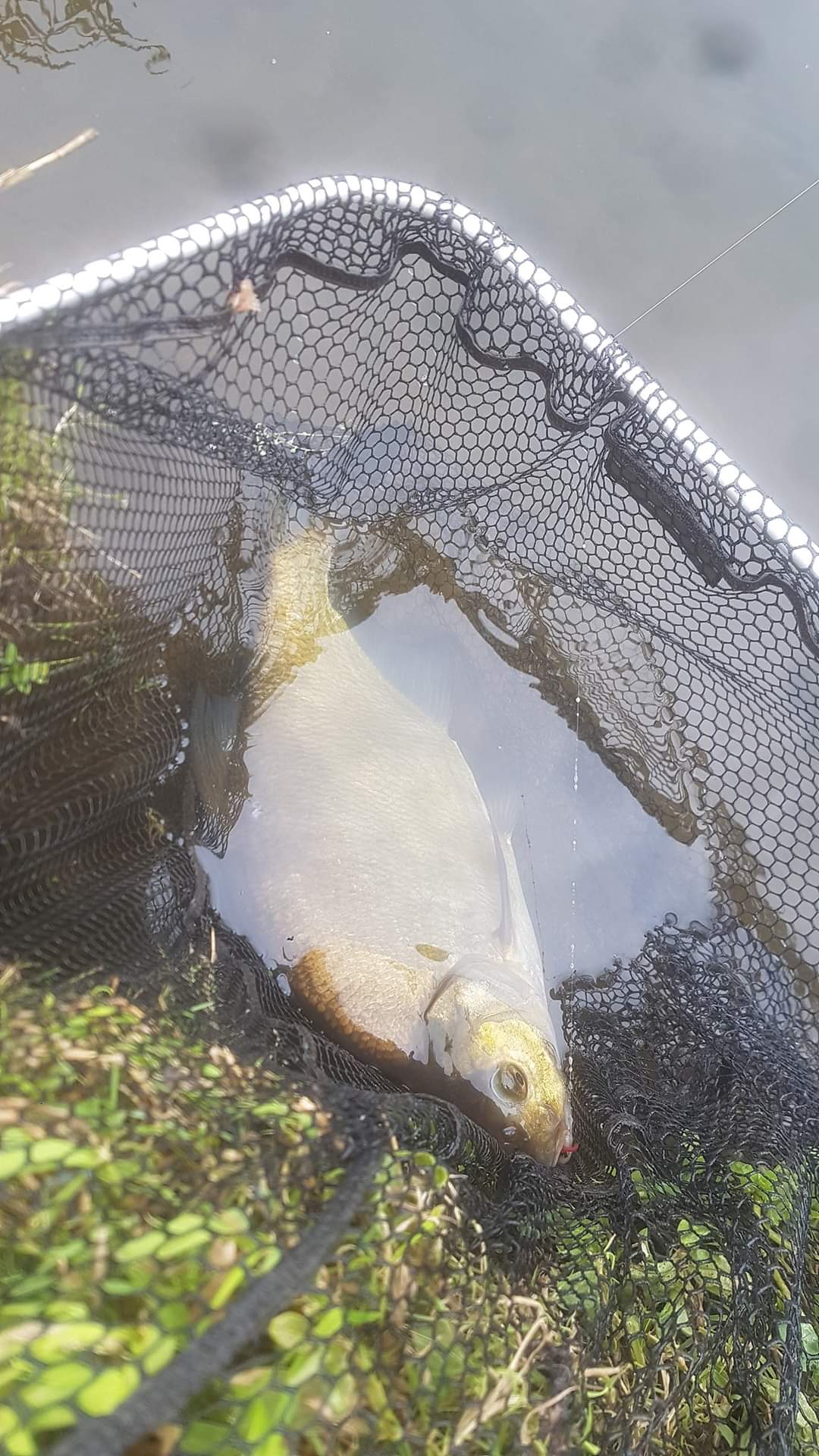
Within the genre of fly fishing for coarse fish urban fly fishing presents its own set of unique challenges compared to the more idyllic settings of rural rivers, stillwaters and reservoirs you might be used to. It is in this setting that I now find myself doing the majority of my fly fishing and, in spite of the potential challenges, I absolutely love it!
Fishing often takes place on or near public footpaths or other areas that are open to the public. Pedestrians (including dog walkers and runners), cyclists, even road traffic can pose a potential hazard to your gear, your cast and even, in some cases, to you!
Watching your back-cast is essential. Cyclists, in particular, are very hard to stop, or control, on lightweight fly tackle and can strip your fly line and backing in a matter of seconds! Passers-by, generally have an aversion to finding a fly or fly line whipping past their head and can become quite irate; so keeping your eyes open and paying attention to your surroundings is even more important than usual.
Fishing spots are often a little cramped. Fences, railings, walls and hedges, as well as overhanging trees can hamper your back-cast to the point of impossibility. Getting into the water and wading can help here, but my local is often deep in the margins with a silty bottom so I mostly fish from the bank. I’ve found that practicing my roll cast, side cast and bow and arrow cast has helped enormously in the more awkward spots.
The hazards aren’t just above the water. Like most urban waterways, mine have the added dangers of human imposed rubbish. Abandoned bicycles, abused shopping trollies, redundant scaffolding, and general litter join the more usual weed, water lily patches, rocks, fallen trees and broken branches to create a unique and tackle hungry habitat that, though it may not look ideal, actual provides a diverse and relatively safe habitat for our quarry.
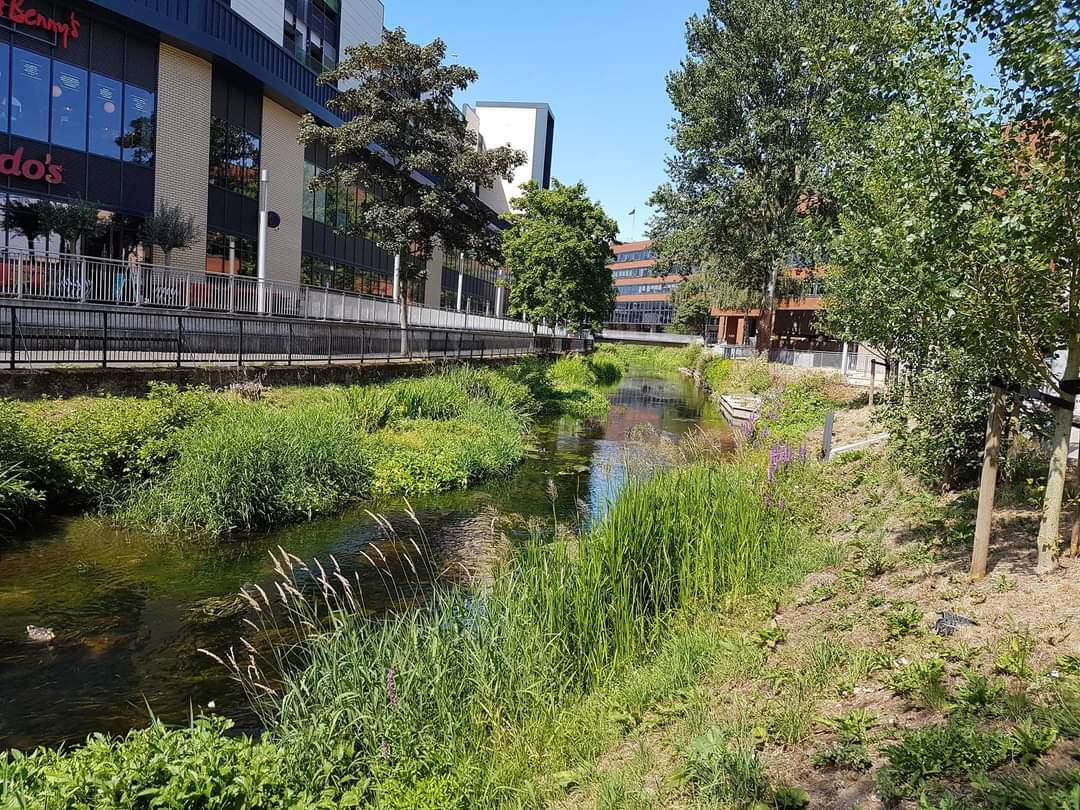
So, given these unique and interesting habitats, what fish should we be looking to target? Read on for my quick guide to urban coarse fish and fishing:
Roach: Probably our most common river fish, roach are plentiful and pretty to look at, but fast biting and easy to spook. They can take in and eject a fly before you can even see, let alone strike! I like to use small nymphs, presented on a French style leader or under a floating indicator, but sight fishing presents the best chance of success.
Dace: Make roach look slow! They are lightning fast, but rise well to a dry fly and take small nymphs with gusto. If you want to sharpen your reflexes there are no better target than dace.
Perch: Bold, swaggering, and handsome; small perch can be greedy beyond belief, attacking all many of flies without hesitation, but larger specimens are tricky and worthwhile adversary. As the great Richard Walker put it “A big perch is the biggest of all fish”.
Chub: Izaak Walton called chub “the fear fullest of fishes” and that’s certainly true of larger ones. Put one foot or cast wrong and your quarry will melt away. Small ones (like perch) can be greedy to the point of suicide but both large and small will take a wide variety of flies and are a very worthy adversary.
Bream: Bream must be the most underrated fish to target on fly. Loathed by many because of their reputation for snot and poor fighting ability, river bream are an entirely different animal to their still-water brethren. They are hard fighters on light tackle and can be very choosy about what they eat.
Rudd: Not often found in rivers (though they seem to have appeared in numbers in my local in recent years) where they are found they will respond to pretty much the same tactics as roach. Rudd, however, are much more inclined to rise for a dry fly.
Gudgeon: Yes! Really! Gudgeon are great fun on very light tackle and surprisingly aggressive. A jigged nymph is a very effective way to get their attention and an entire shoal might follow a tasty fly up into mid water before striking or dropping back down to the river bed.

Tackle: For most of my urban river fishing I use a #4wt outfit and choose a Wychwood Drift XL rod in 9ft 6in (extending to 10ft 2in) with a matching reel in the form of a Wychwood SLA MKII. Sometimes I’ll carry two identical set ups, one for nymphing and another for dries.
If I’m fishing streamer patterns for chub or perch I’ll step things up a bit and use a #5wt Drift XL or a 9ft 6in Wychwood Truefly T2 with a Flow reel. Lines are always Wychwood Feather Floaters.
Most of my nymphing is done using a French style leader and two small (size 16 or 18) weighted nymphs. This is particularly effective in streamier water. In slower water I’ll often use a single nymph suspended below a woolly indicator or a bushy dry fly; but in either case by far the most effective way of seeing takes is to watch the fly (or flies) itself, so always wear polarising sunglasses.

For dry flies I’ll use a tapered leader (Wychwood Camo or Ghost Mode) with a short tippet of Wychwood Ghost Mode Flurocarbon. The entire leader rarely exceeds 14 feet and is usually more like 12. My rivers are narrow and the fishing is mostly at short range so there isn’t the call for the ultra-long leaders you might use on the trout rivers. Coarse fish don’t seem to be quite as bothered about drag as trout are, indeed chub, in particular, seem to like to attack a dragging fly!
As I’ve already said, roach, rudd and dace are fast biters so, unlike trout you need to strike the moment you see the rise. If you wait for the fish to turn it will have already ejected your dry fly and you’ll miss your strike.
Flies: You probably already have plenty of flies in your boxes that will do the job for coarse fish. When all’s said and done coarse fish and trout eat the same food. The main difference is that flies for coarse fish should be a little smaller than you’d traditionally use for trout – size 20 to 14 for nymphs and 22 to 16 for dries. The exceptions to this are chub and perch who’s large mouths are more than capable of fitting in the largest flies.
These are a few of my favourite flies for coarse fish:
Red and olive beaded bug
Peeping caddis
Olive nymph
Red tag nymph
Squirmy Wormy
Soft hackle beaded spider
Cdc and elk
F-fly
Griffith’s gnat
Grey midge
Martin’s minnow
Stand-up crayfish
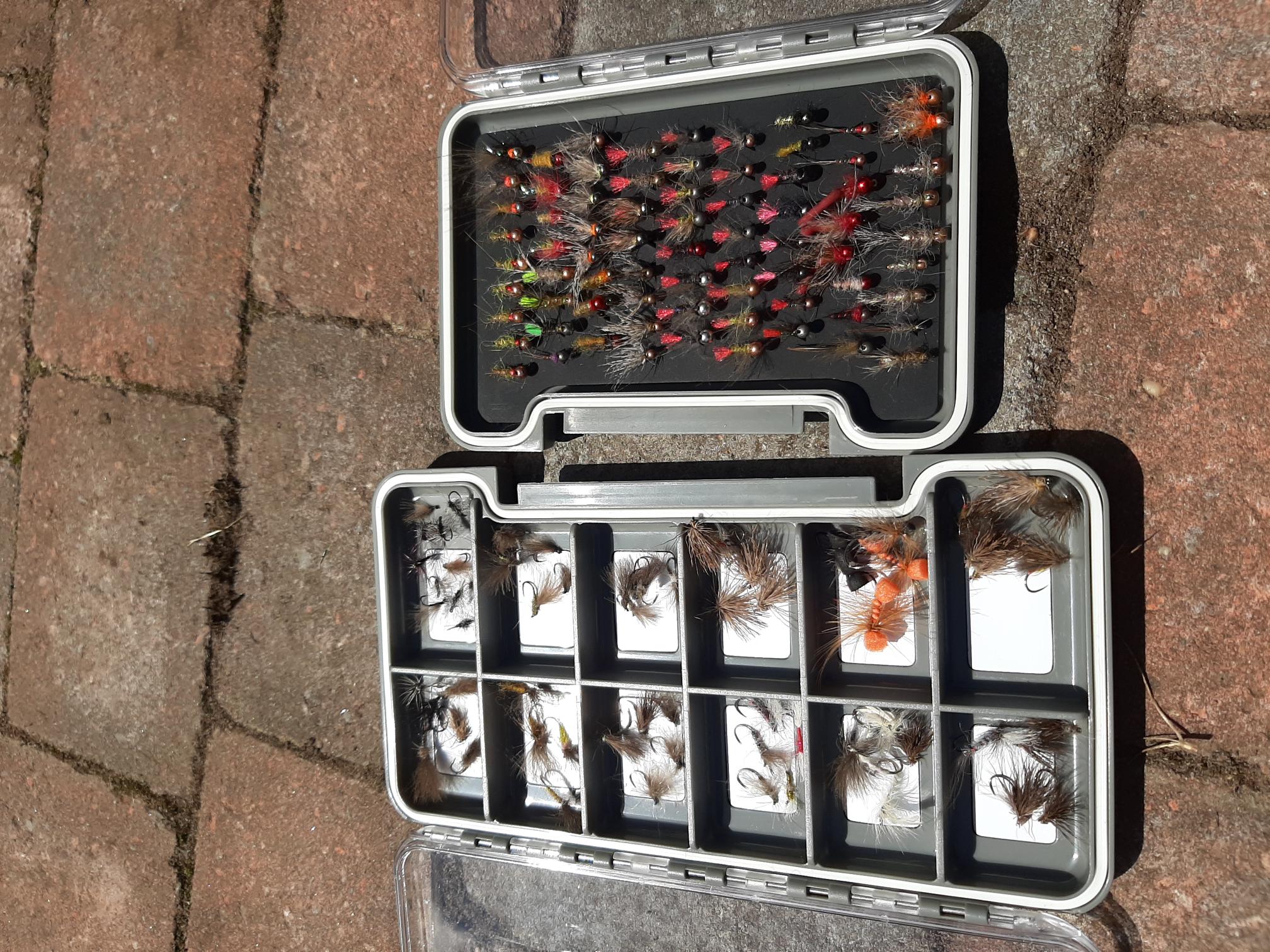
Urban fly fishing lends itself to the short session/”quick hit” style; particularly in my own case, with short (2 hours at most) sessions around the school run, or before and after work being the norm.
Something to be aware of, particularly when you’re fishing in areas that are open to the general public, is that you will attract attention. People often stop to make comment or to ask what I’m doing, or fishing for. Some of the comments are priceless:
“There’s no trout in there, mate! (Never gets old…)
“Piking are you?” (With a #4wt wand? seriously)
“Oh. I didn’t think there could be any fish in there!”
And, my personal favourite, from last Summer: “Eee… Look, Bob. He’s fly fishing!” “In there? He must be balmy!”
Sometimes people will be genuinely interested and in this case I feel it’s important to stop for a chat and engage with them, maybe even give them a little demonstration. I’ve found bait and lure anglers to be particularly fascinated to see the fly fishing approach being used.
There’s a bit of a stereotype that urban angling is a bit “down and dirty” and maybe even a bit dangerous. While that might be true to a certain extent it can also be the perfect environment to introduce children (or other newcomers) to the sport of fly fishing.
Many an urban park has a river or stream running through it (there are two near me) and these can be excellent places to safely practice our art, with the added bonus that if the kids need a break or get bored because the fishing is a bit slow you can let them have a run round and a play for a bit.
One of my favourite spots is in a local park, opposite a children’s play area. It never takes long for the kids to notice me fishing and the shouts and looks of surprise and joy when I pull out a gleaming roach or a bristling perch are such fun to hear and see. I’ll often hold the fish up, quickly, for the kids to get a proper look at before I rest and release them.
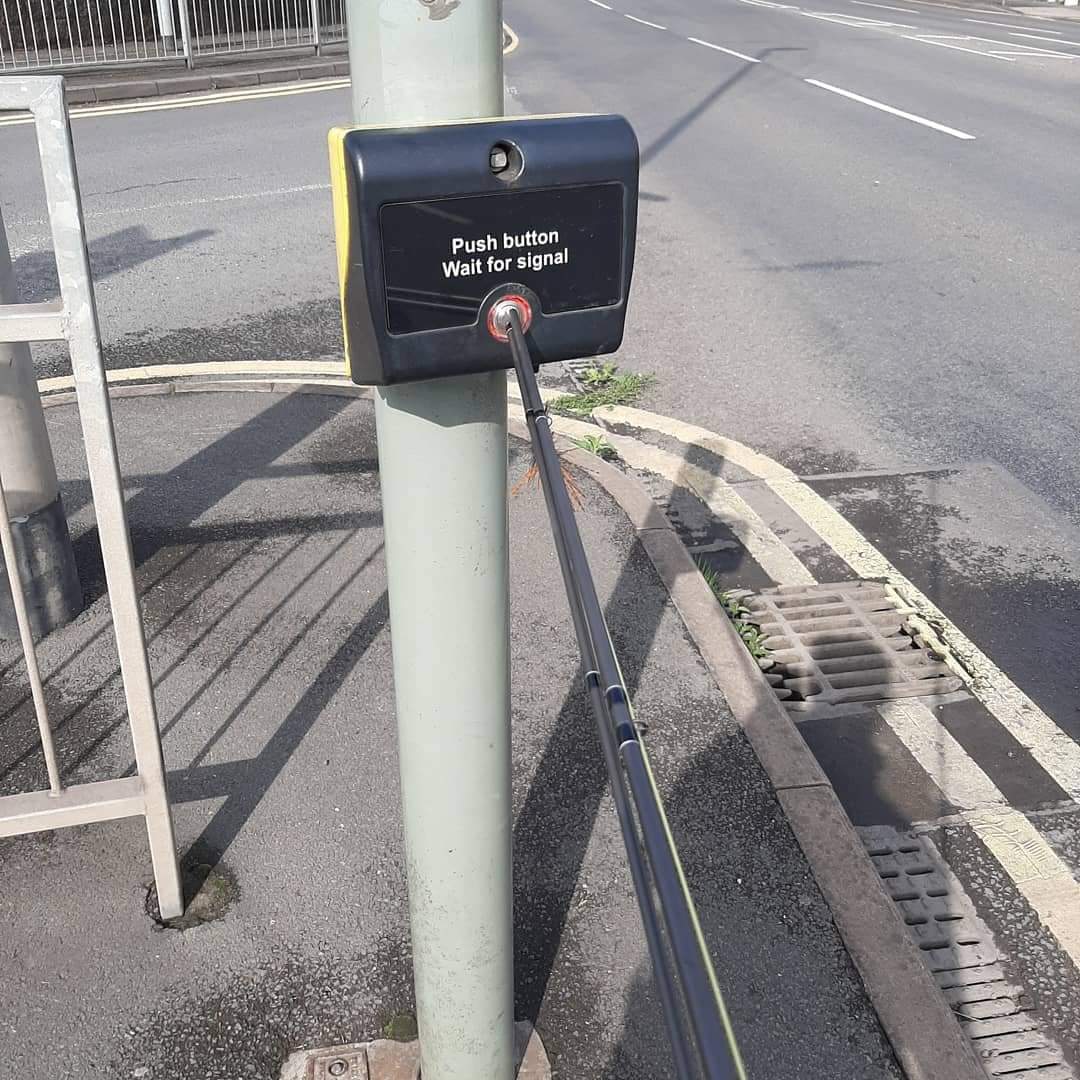
Above all else fly fishing for coarse fish is great fun! It still has the feel of pioneering, even though there are more and more anglers trying it out now.
There are (generally) no restrictive rules like “upstream dry fly only” so if you want to fish a downstream nymph, you can; and it’s a very effective technique!
Each species requires a slightly different technique or a tweak of approach to be consistently successful so it’s always a challenge and an awful lot of urban rivers are uncontrolled and free to fish.
Hopefully I’ve given you a taste of the alternative angling that’s out there and on your doorstep. When June 16th (the start of the coarse fishing season) arrives this year, why not get out on your local urban river with your fly tackle and give it a try?
